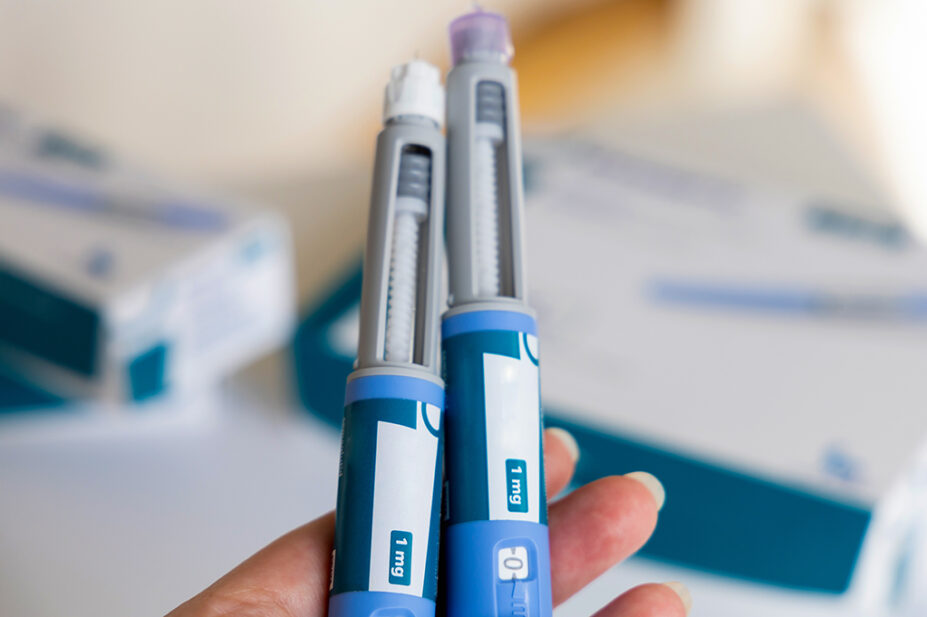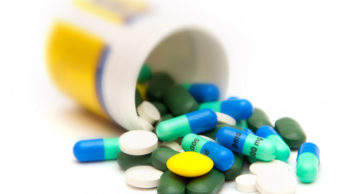
Shutterstock.com
Glucagon-like peptide-1 receptor agonists (GLP-1 RAs), which are used to treat obesity and type 2 diabetes mellitus, are associated with a reduced risk of several substance use disorders, seizures and neurocognitive disorders, results from a large study have revealed.
The study, published in Nature Medicine on 20 January 2024, also recorded decreased risks of coagulation disorders, cardiometabolic disorders, infectious illnesses and several respiratory conditions. The researchers noted an increased risk of gastrointestinal disorders, hypotension, syncope and arthritic disorders.
Using data from 2 million patients on the US Department of Veterans Affairs databases, the cohort analysis compared 215,970 users of GLP-1 RAs with patients using sulphonylureas (n=159,465), DPP4 inhibitors (n=117,989), SGLT2 inhibitors (n=258,614) or a composite of the three (n=536,068).
The researchers also looked at 1,203,097 individuals who continued with their previous antihyperglycaemic regimen.
The researchers said that their analysis revealed found that GLP-1 RA use was associated with a reduced risk of substance use disorders (including alcohol, cannabis, opioid and stimulant use disorders), psychotic disorders, seizures and neurocognitive disorders, including Alzheimer’s disease and dementia, compared with usual care.
Participants in the study were enrolled between October 2017 and December 2023 and followed up for a median of 3.7 years.
“Our results supplement previous evidence showing that GLP-1 RA use is associated with a reduced risk of alcohol use disorders and tobacco use disorders, as well as animal studies showing that GLP-1 RAs may reduce the rewarding properties of alcohol and other addictive drugs.
“Initial reports raised concerns about suicidal thoughts and self-injury among GLP-1RA users, which prompted a 2023 review of GLP-1RA use by the European Medicines Agency [EMA]. However, the review ultimately found no evidence of a causal link,” they added.
“Overall, our results extended the body of evidence on the potential utility of GLP-1 RAs in neuropsychiatric disorders and suggest the need to further evaluate the biology and effectiveness of GLP-1 RAs as either a primary or adjuvant therapeutic for use in the management of various substance use disorders, psychotic disorders and depressive disorders.”
In September 2024, the Medicines and Healthcare Regulatory Authority (MHRA) said a review had found no causal association between GLP-1 RA use and suicidal and self-injurious thoughts and/or actions.
The review was triggered by reports of severe psychiatric reactions — including suicidal ideations, self-harm and depression — associated with GLP-1 RAs.
An earlier EMA review, published in April 2024, found no evidence that GLP-1 RAs were linked to suicidal and self-injurious thoughts.
Amira Guirguis, chair of the Royal Pharmaceutical Society’s science and research committee, commented: “One of the most striking observations [in the latest study] is the consistent association between GLP-1RA use and a reduced risk of several substance use disorders. This aligns with preclinical evidence demonstrating that GLP-1RAs can modulate central reward pathways, reducing the reinforcing effects of addictive substances such as alcohol, opioids and stimulants.
“The reduced risk of depressive disorders and suicidality observed with GLP-1 RA use provides further impetus for research. While initial concerns regarding suicidality prompted regulatory reviews, these have largely been dispelled by adjusted analyses, accounting for confounding factors and broader data. On the contrary, GLP-1RAs may exhibit antidepressant properties, potentially mediated through neuroinflammatory and neuroprotective pathways.
“The promising findings deserve further investigation through dedicated studies to validate and refine our understanding of GLP-1RA effects on mental health,” Guirguis added, but noted: “It is important to approach these findings with caution. The observed associations, though robust, require confirmation in diverse populations and clinical contexts.”


